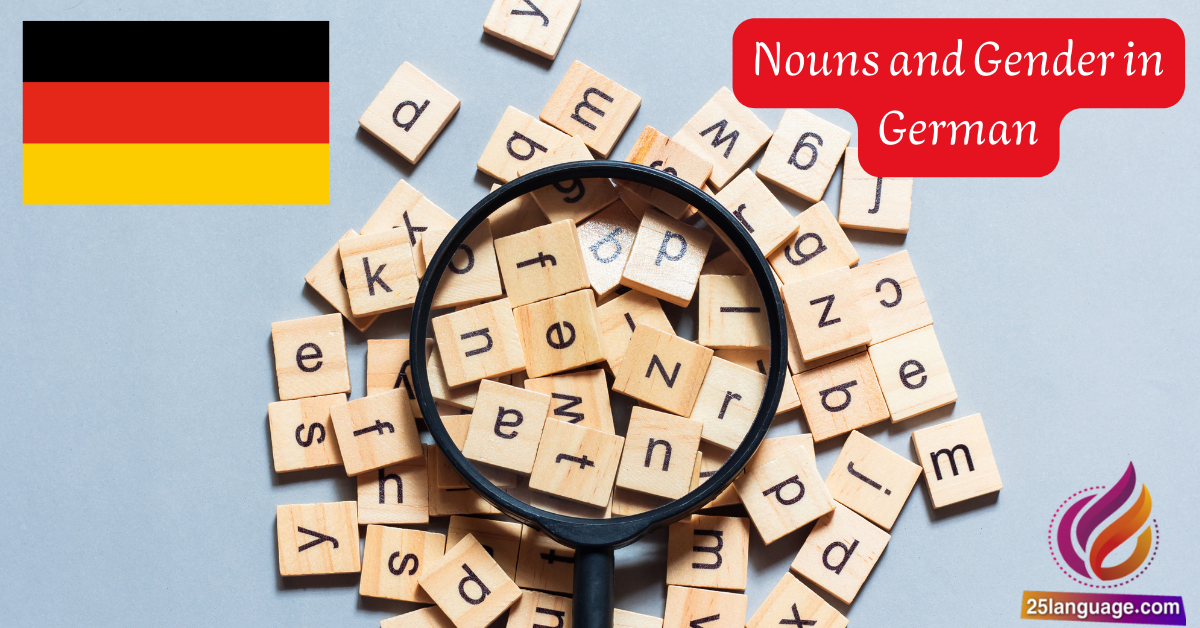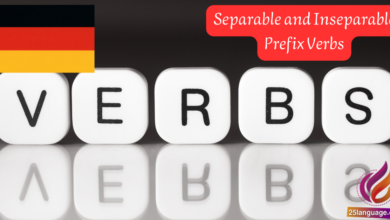Nouns and Gender in German: Mastering Articles, Endings, and Usage

In the rich tapestry of the language, nouns and gender in German play a starring role, and understanding their gender is key to mastering communication. Unlike English,where nouns are mostly neutral,German features three distinct genders: masculine,feminine,and neuter.Grasping these categories not only enhances your vocabulary but also unlocks the grammatical structure of the language, making your conversations more fluent and confident. Join us as we dive into this fascinating aspect of German!
Understanding Nouns and gender in the German Language
In the German language, all nouns are assigned a grammatical gender: masculine, feminine, or neuter.This gender is crucial as it affects the articles and adjectives that accompany the noun. Each gender has its definite article: der for masculine, die for feminine, and das for neuter. For example:
- der Tisch (the table – masculine)
- die Lampe (the lamp – feminine)
- das Buch (the book – neuter)
While there are some patterns that can definitely help learners predict the gender of a noun, exceptions abound, making it crucial to memorize the gender alongside new vocabulary. Some general rules include:
- Nouns ending in -ung (e.g., die Ausbildung – the education) are usually feminine.
- Nouns ending in -er (e.g., der Lehrer – the teacher) are often masculine.
- Nouns ending in -chen (e.g., das Mädchen – the girl) are typically neuter.
| German Example | Rule/Pattern | English Translation |
|---|---|---|
| der hund | Masculine | the dog |
| die Katze | Feminine | the cat |
| das Auto | Neuter | the car |
Exploring the Rules and Exceptions of German Noun Genders
In the German language,nouns are categorized into three genders: masculine (der),feminine (die),and neuter (das). Understanding the rules for assigning genders to nouns is crucial, as it affects article usage, adjective endings, and pronoun forms. Here are some general rules to guide learners:
-
- Masculine nouns often include:
- Days of the week, months, and seasons (e.g., der Montag - Monday)
- Whether-related words (e.g.,der Regen – rain)
- Nouns ending in -er,-el,or -ig (e.g., der Lehrer – teacher)
- Feminine nouns frequently consist of:
- Nouns ending in -e (e.g., die Blume - flower)
- Nouns that denote females or professions (e.g., die Frau - woman)
- Nouns formed from verbs ending in -ung (e.g.,die Bildung – education)
- Neuter nouns can typically be identified by:
- Nouns ending in -chen or -lein (e.g., das Mädchen – girl)
- Collective nouns (e.g., das Volk - people)
- Most nouns created from infinitive verbs (e.g., das Essen - food)
- Masculine nouns often include:
Though, several exceptions to these rules exist, necessitating memorization and practice.Some notable examples include:
| german Noun | Gender | English Translation |
|---|---|---|
| das Mädchen | Neuter | Girl |
| der Tisch | Masculine | Table |
| die Hand | Feminine | Hand |
| das Wasser | Neuter | Water |
| der Planet | Masculine | Planet |
| die Freiheit | Feminine | Freedom |
Ultimately, gaining comfort with noun genders in German requires consistent exposure and practice. Different regions may exhibit variations, and occasional irregularities underscore the importance of paying attention to specific cases in everyday usage, ensuring proficiency in gender recognition and its proper application.
Practical Tips for Mastering german Nouns and Their Gender
In German,nouns are categorized into three genders: masculine,feminine,and neuter. A noun’s gender affects its article and adjective endings. The definite articles for each gender are der (masculine), die (feminine), and das (neuter). To master the gender of German nouns, it’s beneficial to familiarize yourself with common nouns and their respective genders. Here are some categories and examples:
-
-
- Masculine nouns:
- der Tisch – the table
- der Stuhl – the chair
- Feminine nouns:
- die Lampe – the lamp
- die Tür – the door
- Neuter nouns:
- das Buch – the book
- das Fenster – the window
- Masculine nouns:
-
| German Noun | Gender | English Translation |
|---|---|---|
| der Apfel | Masculine | the apple |
| die Katze | Feminine | the cat |
| das Auto | Neuter | the car |
| der Hund | Masculine | the dog |
| die Blume | Feminine | the flower |
| das Haus | Neuter | the house |
Enhancing Your German Vocabulary Through gender Awareness
In the German language, nouns are categorized by gender: masculine, feminine, or neuter. This gender assignment can significantly influence vocabulary and articles used in sentences. it is indeed crucial for learners to recognize the definite articles “der” (masculine), ”die” (feminine), and “das” (neuter) that precede nouns, as they indicate the noun’s gender. This is essential not only for correct sentence structure but also for a variety of adjectives and pronouns that must agree with the noun’s gender. For example:
-
-
- der Tisch (the table - masculine)
- die Lampe (the lamp - feminine)
- das buch (the book – neuter)
-
Understanding these gender distinctions will help you expand your vocabulary more effectively. In manny cases, the gender of a noun is indicated by its ending. As an example, nouns ending in “-ung” are typically feminine, like die Bildung (the education), while those ending in “-chen” or “-lein” are neuter, such as das Mädchen (the girl). Here’s a brief overview of some common noun endings and their associated genders:
| German Endings | Gender | Example | English Translation |
|---|---|---|---|
| -ung | Feminine | die Zeitung | the newspaper |
| -er | Masculine | der Lehrer | the teacher |
| -chen | Neuter | das Mädchen | the girl |
| -keit | Feminine | die Freundlichkeit | the friendliness |
| -ment | Neuter | das Instrument | the instrument |
Final Thoughts
Abschluss der Lernstunde: Nomen und Geschlecht im Deutschen
Herzlichen Glückwunsch, liebe Lernende! Ihr habt heute wichtige Grundlagen zu den Nomen und ihrem Geschlecht im Deutschen kennengelernt. Wir haben herausgefunden, dass jedes Nomen im Deutschen entweder maskulin, feminin oder neutral ist und das Genus nicht immer intuitiv aus der Bedeutung des Wortes abzuleiten ist. Das Erlernen der Artikel – der, die und das – ist dabei entscheidend, um eure sprachlichen Fähigkeiten zu verbessern und missverständnisse zu vermeiden.
Ihr habt auch nützliche Strategien kennengelernt, um das geschlecht von Nomen einzuprägen, etwa durch das Erkennen von typischen Endungen und mustern. Denkt daran: Übung macht den Meister! Nutzt die kommenden Tage, um das Gelernte anzuwenden. Versucht, im Alltag die Nomen, die euch begegnen, zu benennen und ihren Geschlecht zu bestimmen. Je mehr ihr übt, desto vertrauter werdet ihr mit den Regeln und Ausnahmen der deutschen Sprache.
Geht mit Zuversicht an euer weiteres Lernen heran! Jeder kleine Fortschritt bringt euch näher an euer Ziel, fließend Deutsch zu sprechen. Habt Spaß beim Entdecken der deutschen sprache und Kulturen, und denkt daran: Deutsch lernen ist ein spannendes Abenteuer! Bis zum nächsten mal!





























